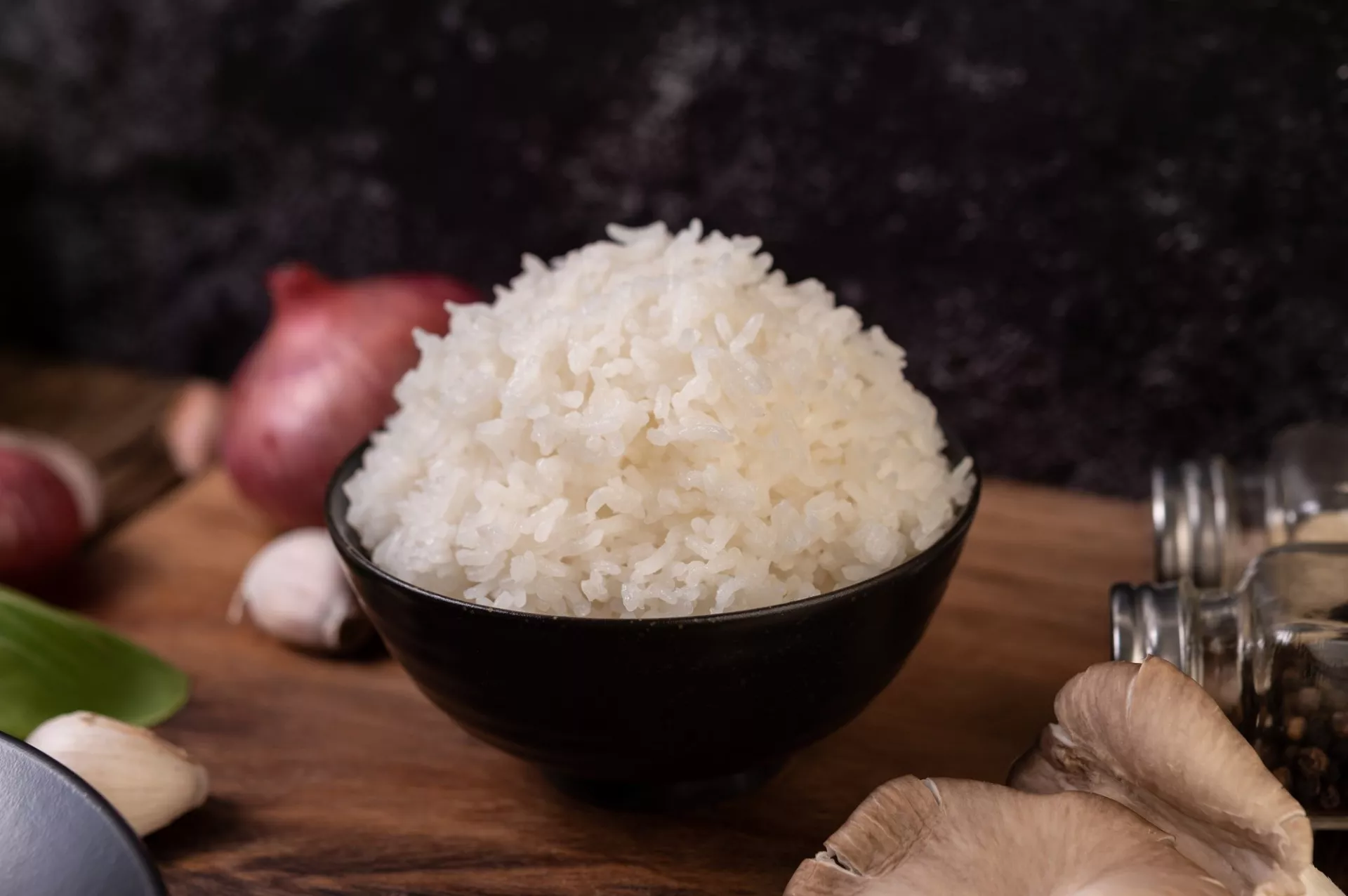A Word about Sushi Rice
Many recipes that call for sushi rice will specify sushi rice only. If you don't have time to hunt down sushi rice, you can always search for short-grain rice or Risotto rice. These are good substitutes for making sushi rice since the rice grains are shorter. Long grain rice is a bad choice because it can easily break and become mushy when it's time to work with cooked rice.
You also want to be sure to wash your rice beforehand after it's measured. This is so you can achieve bright white rice that will have just the right amount of starch within it. Other brands of short-grain rice don't always need to be rinsed as much as sushi rice. The average number of rinses for sushi rice is three times, so you have slightly hazy-looking water by the third rinse.
Regular short-grain rice still needs to be rinsed until it has the same hazy appearance in the water before letting it soak. This recipe also requires soaking which allows each grain of rice to absorb the right amount of water before it is cooked. Without presoaking, the rice will have an uneven texture that can range from undercooked to overcooked rice. This method also helps the heat reach the center of each rice kernel.
Presoaking also helps keep the cooking time down and helps prevent your rice from sticking to the bottom of your pot.
What You Need:
- Medium cooking pot with lid
- Mesh strainer
- Small pot
- Bowl for washing rice
- Rice spoon or flat spatula
- Rice cooking cup or measuring cup
- Tablespoon
- Teaspoon
Ingredients:
- 2 1/4 cups Japanese (short grain) sushi rice (Risotto short grain or any short grain rice)
- 2 1/4 cups of water
- 1 cup rice vinegar (unseasoned)
- 4 tablespoons sugar (rounded)
- teaspoon salt
Instructions:
This is how to cook sushi rice using a 1:1 ratio of rice to water. Even after presoaking your rice, this ratio should not change.
Place your rice into a small bowl for washing. It needs to be filled with clean water to remove the excess starch. Gently wash the rice in your bowl and stir without smashing or pushing the rice together. Use your hands shaped like a claw to stir the rice until the water becomes milky looking. It will need to be strained to remove the water and return the rice back to the bowl.
When using sushi rice, this will need to be repeated 3 to 4 times. Use the strainer each time to catch any rice that comes out when pouring out the starchy water. Any other substitute rice is perhaps rinsed once or twice depending on the starch content. When the water is lightly hazy, the rice is ready to presoak. Then use a strainer to transfer your rice into a small pot.
Put the rice in a small pot and add clean water to soak. Only add 1-cup of water so the water will absorb into each piece of rice. This can take up to hour but, no more than 1 hour. Cover your pot with a towel to keep out anything that might fall into the rice. When the rice has absorbed the water, you'll notice that its color has turned from yellowish clear to bright white. Now drain the rice in your strainer and transfer it to your cooking pot.
Once your rice is in the cooking pot, add 2 1/4 cups of water. Be sure to always use cold water and not room temperature water. Always stick to the measuring cup that you prefer to use. If this is the US measuring cup, use this for the water as well. Always cover your boiling pot with a lid during the boil and simmering stage.
Next, on your stovetop, bring the water to a boil using medium-high heat. It's important that once the water reaches a boil you reduce it to simmering by decreasing the stovetop heat to medium-low for 8 minutes. Your water should look like a constant gurgling with slow bubbles that come up to the surface. After exactly 8 minutes, turn off the heat and leave the lid on the pot.
Now you want to let the rice sit for 20 minutes. This gives you plenty of time to prepare your vinegar solution. Sushi rice requires this vinegar solution to both achieve the right level of stickiness and the right amount of flavor.
To make the vinegar solution, use the same bowl as you used for washing your rice. Just wash it out with water so it's clean. Now add the sugar and salt and mix these into the vinegar until they are dissolved. Let this sit until the rice has been sitting for 20 minutes.
Transfer your cooked rice into a wide mixing bowl or salad bowl, or perhaps a flat casserole dish. The rice should easily scoop out of the pot into your bowl. Scoop out rice using a flat spatula or rice spoon.
Now you can add the rice vinegar solution and pour it over the spatula instead of directly onto the rice. This is done so the so rice is evenly covered. Don't chop at the rice once you've added all of the vinegar solution. It's better to slice or scrape across the surface of the rice to mix in the vinegar solution.
This also helps to keep the rice from being damaged and it will stay in one piece as it soaks in the vinegar. Don't over-mix the rice either, since it will become too sticky to work with if you've agitated the rice too many times. Just mix and move all of your rice from one side to the other two times. After this, allow the rice to cool for 1 hour before it's ready to use.

 Everything You Need to Know About Traditional German Foods
Everything You Need to Know About Traditional German Foods How to Make Ice Cream in A bag
How to Make Ice Cream in A bag



